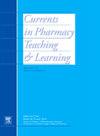持续血糖监测开始时学生患者教育评估指标的可靠性
IF 1.4
Q3 EDUCATION, SCIENTIFIC DISCIPLINES
引用次数: 0
摘要
目的通过测量患者间信度(IRR),验证学生患者教育评估指标在开始使用连续血糖监测(CGM)时的有效性。方法对两所院校的二年级和三年级药学学生进行评估,评估他们在实际评估中就CGM装置(Dexcom G6或FreeStyle Libre 2)的初始设置和使用向患者提供咨询的能力。教师评估员使用标准化的标准对每个学生进行评估。课程结束后,另外三名评价者回顾每节课的记录,并使用相同的标准对学生进行评估。计算类内相关系数[ICC(2,k)]来确定整体标题及其四个主要部分的IRR:引言,咨询能力,结束和沟通能力。结果共54名学生完成心理咨询实践评估;一段录像因音频质量差而被排除在外。每个学生使用标准化的CGM评分标准,由四名教师评估。学生的平均得分为23.1分(满分25分)。与Libre 2相比,Dexcom G6设备的学生咨询中位数得分略低(p = 0.005)。四名评估者的ICC(2,k)值为良好[0.86,95% CI(0.71-0.93)],表明总体评分的一致性很高。结论CGM器械启动的患者教育评估指标在两家机构间具有良好的可靠性,可作为机构评估CGM咨询活动的有用工具。本文章由计算机程序翻译,如有差异,请以英文原文为准。
Reliability of a student patient education assessment rubric for continuous glucose monitor initiation
Objective
To validate a student patient education assessment rubric for initiation of a continuous glucose monitor (CGM) by measuring the inter-rater reliability (IRR).
Methods
Second and third-year pharmacy students at two institutions were evaluated on their ability to counsel a patient on the initial set up and use of a CGM device, either Dexcom G6 or FreeStyle Libre 2, during a practical assessment. Utilizing a standardized rubric, faculty evaluators evaluated each student. After course completion, three additional evaluators reviewed a recording of each session and evaluated the students utilizing the same rubric. The intraclass correlation coefficient [ICC(2,k)] was calculated to determine the IRR of the overall rubric and its four main sections: Introduction, Counseling Competency, Closing and Communication Ability.
Results
A total of 54 students completed the counseling practical assessment; one video recording was excluded for poor audio quality. Each student was graded using the standardized CGM rubric by four total faculty evaluators. The average student score was 23.1 out of 25 possible points. Median scores were slightly lower in students counseling on the Dexcom G6 device compared to Libre 2 (p = 0.005). The ICC(2,k) value among four evaluators was good [0.86, 95 % CI (0.71–0.93)], indicating a high level of agreement for the total rubric score.
Conclusion
A patient education assessment rubric for CGM device initiation demonstrated good inter-rater reliability across two institutions and may be a useful tool for institutions evaluating CGM counseling activities.
求助全文
通过发布文献求助,成功后即可免费获取论文全文。
去求助
来源期刊

Currents in Pharmacy Teaching and Learning
EDUCATION, SCIENTIFIC DISCIPLINES-
CiteScore
2.10
自引率
16.70%
发文量
192
 求助内容:
求助内容: 应助结果提醒方式:
应助结果提醒方式:


